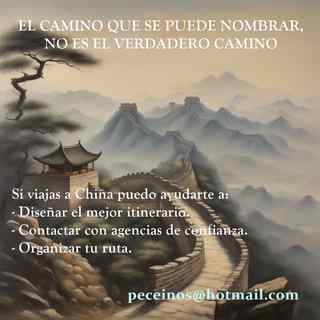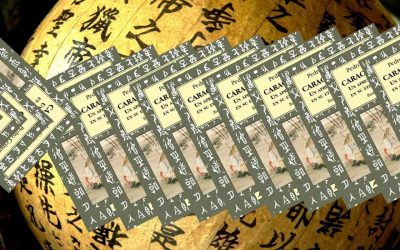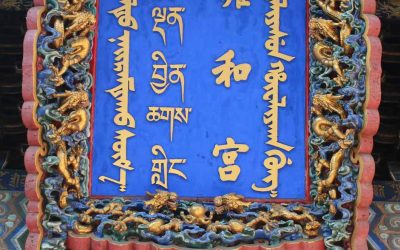Peter Harvey. Buddhism: Teachings, History and Practices. Cambridge University Press. 2013.
(Excerpts from the book. Page 11 and ff.)
In its origin, Buddhism was a Samana-movement. Samanas were wandering ‘renunciant’ thinkers who were somewhat akin to the early Greek philosophers and mystics. The Samanas rejected the Vedic tradition and wandered free of family ties, living by alms, in order to think, debate and investigate. The main Samana groups of Buddha’s time were:
JAINS
Jainism was founded, or at least led in the Buddha’s day, by Vardhamāna the Mahāvīra, or ‘Great Hero’. It teaches that all things, even stones, are alive, each containing a Jīva, or ‘Life-principle’. These are seen as individually distinct, rather like the Western idea of a ‘soul’ but unlike the universal Ātman of the Upanisads, and to be naturally bright, omniscient and blissful. The aim of Jainism is to liberate one’s Jīva from the round of rebirths by freeing it from being weighed down by an encrustation of karma, seen as a kind of subtle matter. The methods of doing so are primarily austerities such as fasting, going unwashed and pulling out the hair, so as to wear out the results of previous karma, and self-restraint, total non-violence to any form of life, and vegetarianism, so as to avoid the generation of new karma. The free-will of the Jīva is emphasized, though even actions such as unintentionally killing an insect are held to generate karma.
AJIVIKAS
Their founder was Makkhali Gosāla (Skt Maskarin Gośāla). Gosāla’s key doctrine was that niyati, or impersonal ‘destiny’, governed all, such that humans had no ability to affect their future lives by their karma: actions were not freely done, but were determined by niyati. Gosāla thus believed in rebirth, but not in the principle of karma as that which regulates the level of a person’s rebirth. The ‘Life-principles’ of living beings are driven by niyati alone through a fixed progression of types of rebirths, from a low form of animal to an advanced human who becomes an Ājīvika ascetic. The Ājīvikas practised rigorous asceticism such as fasting, nakedness and perhaps also disfiguring initiations, and aimed to die by self-starvation (as Vardhamāna in fact did), as a fitting way to end their last rebirth.
MATERIALISTS
The Materialists’ aim was to lead an abstemious, balanced life which enjoyed simple pleasures and the satisfaction of human relationships. They denied any kind of self other than one which could be directly perceived, and held that this was annihilated at death. They therefore denied the idea of rebirth, and also those of karma and niyati. Each act was seen as a spontaneous event without karmic effects, and spiritual progression was not seen as possible.
SKEPTICS
The Skeptics responded to the welter of conflicting theories on religious and philosophical issues, and the consequent arguments, by avoiding commitment to any point of view, so as to preserve peace of mind. They held that knowledge on such matters was impossible, and would not even commit themselves to saying that other people’s views were wrong. The Buddha saw this evasive stance as ‘eelwriggling’, though he shared the wish to step aside from the ‘jungle’ of conflicting views, and avoid dogmatic assertions built on flimsy grounds.
More posts on Chinese culture
Caracteres chinos- índice
..Caracteres chinos: un aprendizaje fácil basado en su etimología y evolución ÍNDICE Prefacio. ....................................................................................................................... 9 Introducción ...
Caracteres chinos-bibliografía selecta
Caracteres chinos: un aprendizaje fácil basado en su etimología y evolución BIBLIOGRAFÍA SELECTA He titulado este post "Bibliografía selecta" porque incluye la sección "Bibliografía" del libro "Caracteres chinos: un aprendizaje fácil basado en su etimología y...
Caracteres chinos- críticas en prensa
Caracteres chinos: un aprendizaje fácil basado en su etimología y evolución CRÍTICAS EN LA PRENSA La Opinión de la Coruña. "Quiero cambiar para siempre el estudio del chino". "Ceínos invita en Caracteres chinos. Un aprendizaje fácil basado en su etimología y evolución...
Caracteres chinos-presentación editorial
Caracteres chinos: un aprendizaje fácil basado en su etimología y evolución PRESENTACIÓN DEL LIBRO POR PARTE DE MIRAGUANO EDICIONES El día 23 de noviembre llega a las librerías un nuevo libro de Pedro Ceinos Arcones (Manual de Escritura de los caracteres chinos, 1998;...
Una mujer, una pistola y una tienda de fideos chinos
Una mujer, una pistola y una tienda de fideos chinos Dirigida por Zhang Yimou: 2009. 85. Min. Una mujer y una pistola y una casa de fideos chinos es una obra bastante singular dentro de la filmografía de Zhang Yimou. Él estilo desenfadado se inicia desde las primeras...
La magia de los caracteres chinos
La magia de los caracteres chinos La palabra escrita, los caracteres chinos, han tenido desde su mismo origen, un sentido mágico para los chinos. No cabe duda de que para ellos un carácter no es sólo un símbolo del concepto que dice representar, sino el propio objeto...
More posts on China ethnic groups
Caracteres chinos- índice
..Caracteres chinos: un aprendizaje fácil basado en su etimología y evolución ÍNDICE Prefacio. ....................................................................................................................... 9 Introducción ...
Caracteres chinos-bibliografía selecta
Caracteres chinos: un aprendizaje fácil basado en su etimología y evolución BIBLIOGRAFÍA SELECTA He titulado este post "Bibliografía selecta" porque incluye la sección "Bibliografía" del libro "Caracteres chinos: un aprendizaje fácil basado en su etimología y...
Caracteres chinos- críticas en prensa
Caracteres chinos: un aprendizaje fácil basado en su etimología y evolución CRÍTICAS EN LA PRENSA La Opinión de la Coruña. "Quiero cambiar para siempre el estudio del chino". "Ceínos invita en Caracteres chinos. Un aprendizaje fácil basado en su etimología y evolución...
Caracteres chinos-presentación editorial
Caracteres chinos: un aprendizaje fácil basado en su etimología y evolución PRESENTACIÓN DEL LIBRO POR PARTE DE MIRAGUANO EDICIONES El día 23 de noviembre llega a las librerías un nuevo libro de Pedro Ceinos Arcones (Manual de Escritura de los caracteres chinos, 1998;...
Una mujer, una pistola y una tienda de fideos chinos
Una mujer, una pistola y una tienda de fideos chinos Dirigida por Zhang Yimou: 2009. 85. Min. Una mujer y una pistola y una casa de fideos chinos es una obra bastante singular dentro de la filmografía de Zhang Yimou. Él estilo desenfadado se inicia desde las primeras...
La magia de los caracteres chinos
La magia de los caracteres chinos La palabra escrita, los caracteres chinos, han tenido desde su mismo origen, un sentido mágico para los chinos. No cabe duda de que para ellos un carácter no es sólo un símbolo del concepto que dice representar, sino el propio objeto...




